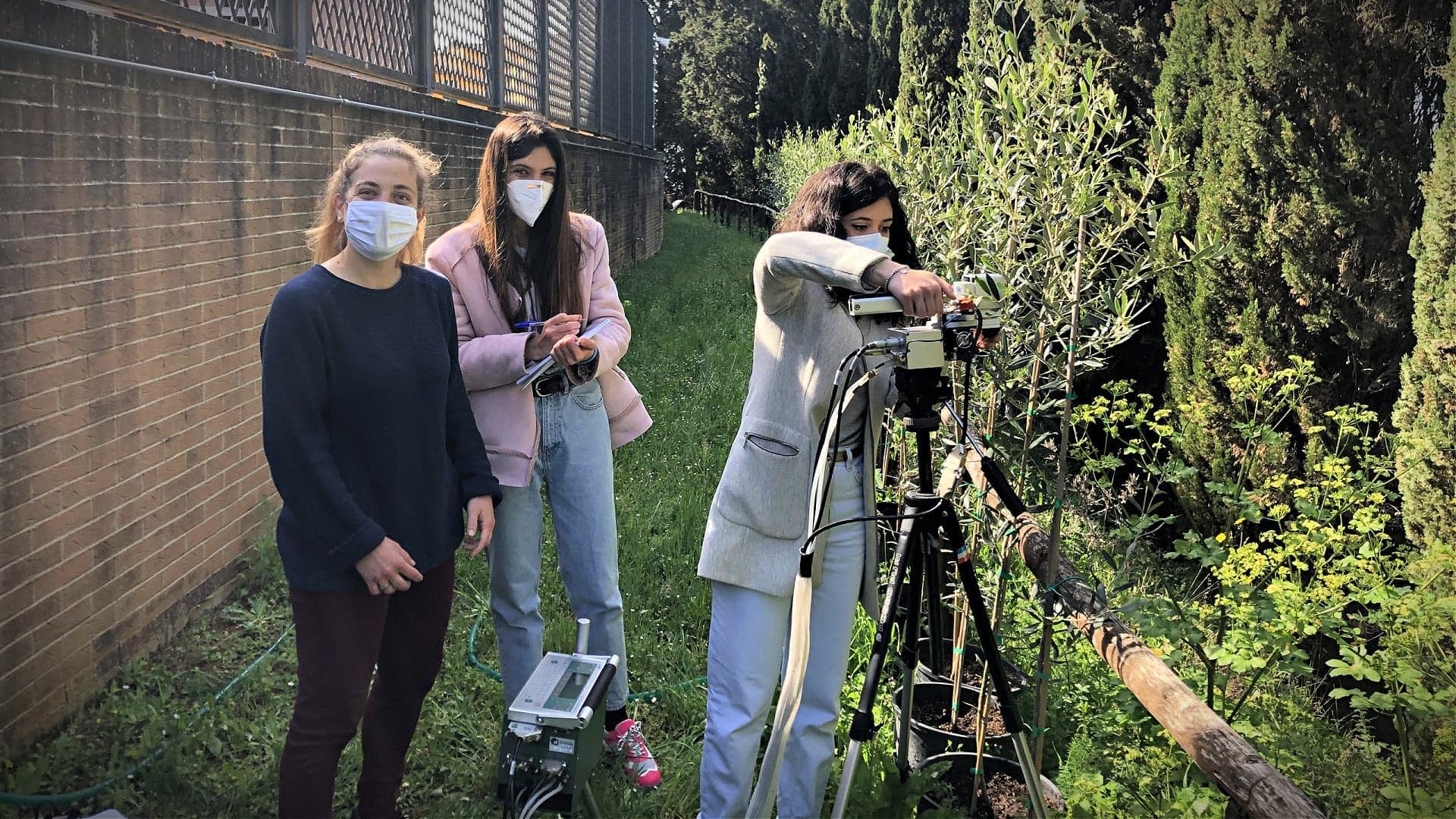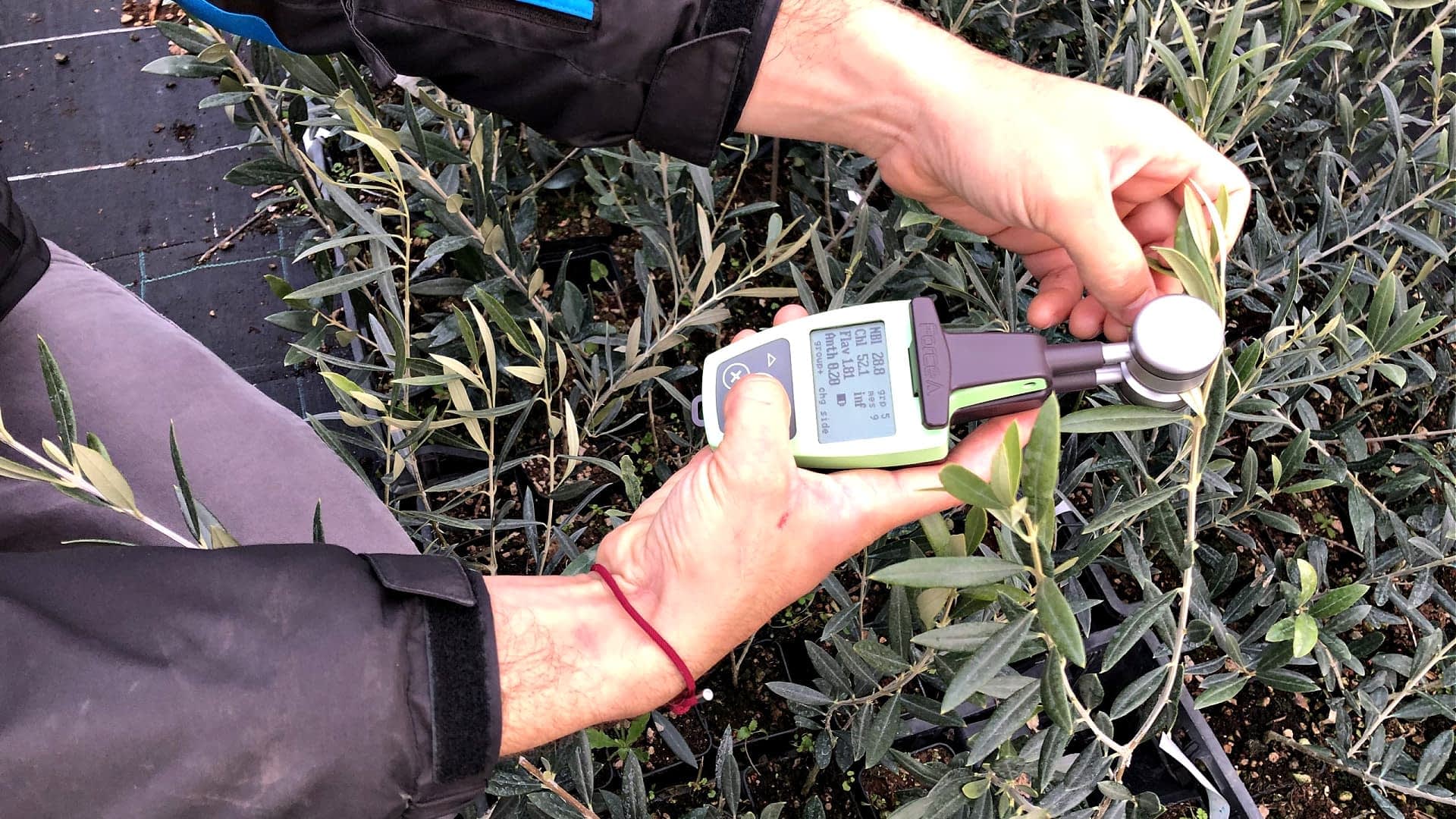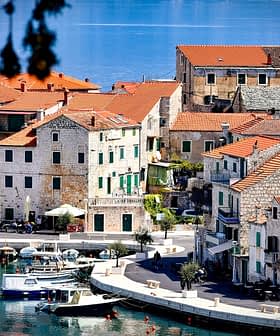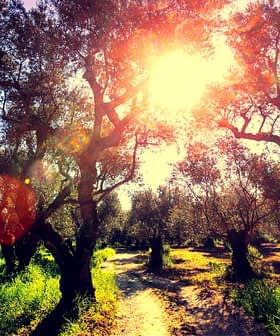Research on Olive Biodiversity Is Key to Tackling Climate Change
Identifying traits that allow olives to resist extreme weather events, volatile temperature changes and diseases will allow farmers to plant more resilient olive varieties in the future.
 Investigating olive trees in the nursery (Photo: Claudio Cantini)
Investigating olive trees in the nursery (Photo: Claudio Cantini) Claudio Cantini, head of the Institute for BioEconomy, discusses the importance of characterizing olive varieties and the role of germplasm banks in preserving biodiversity and improving olive production. Researchers are studying the resistance of olive varieties to environmental stresses, such as water scarcity and UV radiation, to identify mechanisms that could lead to the development of new, resilient olive varieties.
“In recent years, there has been increasing interest in characterizing and cataloging the olive varieties,” said Claudio Cantini, the head of the Institute for BioEconomy of the National Research Council’s (IBE-CNR) Santa Paolina experimental farm, in Follonica.
“This led to the creation of large collections like ours, which includes over 1,000 accessions, flowing into the world olive germplasm bank established by United Nations Food and Agriculture Organization (FAO) and supported by the International Olive Council,” he added.
On the basis of the preliminary findings, we are already able to hypothesize an ideal olive tree.
Santa Paolina was established in 1966 to preserve plant biodiversity and hosts important varietal collections of pear, peach, persimmon, apple and quince, alongside olives. In addition, it includes a premultiplication center of certified olive plant material and a facility for the rehabilitation of olive trees affected by virus diseases.
See Also:Researchers Work to Identify Olive Varieties Best Adapted to Higher Temperatures“The germplasm banks are very vast, and yet the world’s varietal richness is far from being completely cataloged,” Cantini said.
He recalled that the olive tree species – Olea Europaea – has more than 2,000 known varieties, of which about 540 are native to Italy, the country with the richest olive biodiversity.
“Let’s just think about the several minor varieties, especially those recently rediscovered, which still have to be studied and characterized,” Cantini said. “We can say that the growing interest of operators, eager to test new varieties in order to improve their olive oil production, is pushing in favor of this research.”
At this stage, the germplasm banks, where researchers store the genes that correspond to the different characteristics of the olive varieties, take on crucial importance: they can provide the farming sector a greater choice of plants, especially in light of climate change.
“The olive germplasm banks, vast collections of genetic diversity, are becoming a fundamental resource,” Cantini said. “It goes without saying that preserving biodiversity is a priority at this moment, as it is fundamental for the quality of ecosystems.”
“Thus, the more we characterize our vast olive biodiversity, the more we can adequately enhance it and use it to cope with the new challenges ahead,” he added.
Research on olive biodiversity can help find new ways to mitigate the effects and cope with extreme weather events, sudden temperature changes and water stress, all of which occur with increasing frequency and create the conditions for the development of diseases.
Cantini is currently supervising a research group of PhD students studying the resistance of olive varieties to these environmental stresses.

Photosynthesis assessment (Photo: Claudio Cantini)
“Just as with the variations in the human species, where there are resistance mechanisms within some individuals and populations, also within the olive tree species there may be characters in the genome of the different varieties that are diverse and therefore can give diverse responses when the plant is under stressed conditions,” Cantini said. “I can say that when we delve into the sphere of olive varieties, a new whole world opens up.”
The research group is now working on three publications about the stress caused by ultraviolet radiation.
“We are studying the resistance of some varieties to the stress caused by lack of water,” Cantini added. “Significant differences within the varieties are already emerging, as we note very different mechanisms.”
The researchers are also considering morphological characteristics, including the water transport mechanism while focusing on the anatomy of some varieties that have completely different transport vessels in size and shape. Besides the anatomical aspect, they also consider the formation of some substances.
“If we look at what happens inside these varieties when we put them under stress, we note the production of various substances that in some way tend to counteract the stress,” Cantini said. “Preliminary results revealed to us the presence of a protein, which is known in other species but not much studied at this time, that would seem to represent a convenient element in the olive tree.”
“We are focusing on this protein to understand if it can play a key role,” he added. “Above all, we are looking into the interaction between this protein and the genome; therefore, the action of the gene that is activated, and possibly how this might be related to other characteristics of the plant, anatomically, and in other respects.”
The assumption is that within the diversity represented by the numerous varieties from all over the world in the olive tree species, resistance mechanisms may be exploited in the future.
“Our goal, one of all researchers, is to identify these mechanisms,” Cantini said. “To give an example with a well-known variety, Leccino is resistant to Xylella fastidiosa and also to cold, and some bacteria and fungi as well, which makes us think that there must be a unique mechanism acting within this variety.”
“We have then introduced Leccino in our studies, together with other varieties that, instead, have different susceptibilities, and we are verifying what happens within these varieties,” he added.
The aim is to have a database with a wealth of information, through which researchers can not only characterize existing varieties that are ready to be used but also create new ones.
“On the basis of the preliminary findings, we are already able to hypothesize an ideal olive tree,” Cantinti said.

Measuring chlorophyll and nitrogen (Photo: Claudio Cantini)
His group extrapolated four model plants from the Santa Paolina database for their study.
“We are trying to figure out what happens when we put these model plants under stress,” he said. “So, for example, let’s suppose we have a cold-resistant variety and a non-cold-resistant variety, which have respectively wide and narrow transport vessels, one being resistant to Xylella and one non-resistant. We put them under water stress; we note that the mechanism of how the plants relate to environmental stresses changes completely according to their variety, and this is found at the cellular and genetic level.”
“Then, for example, if we identify a protein like the one abovementioned, we access the database and check the levels of this protein within each variety,” Cantini added. “If we find out that a gene is activated, we go and see which variety has a high activation. If this happens, this is considered as a marker.”
“We can have protein, genetic or physiological markers, that can also be seen in seedlings,” he continued. “We then can make crossings, look for that marker in all the siblings and select only those who have that marker, which will be taken into account in the subsequent studies. A consistent number of markers allow us either to rediscover old varieties, which were set aside by farmers over the centuries or to develop new ones.”
Currently, the IBE researchers are carrying out the genetic fingerprinting of 1,200 olive trees, including varieties and accessions, which are part of the Santa Paolina collection.
“We believe that starting from an in-depth screening of the collections, and a far-sighted vision of players, these studies could lead to interesting discoveries for the treatment and prevention of certain plant pathologies in the near future,” Cantini concluded.
Share this article









